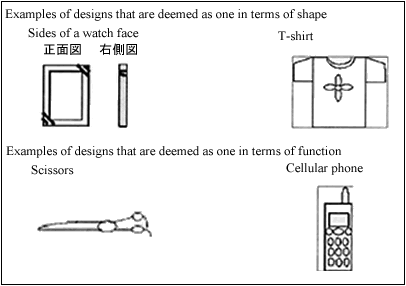Japanese Design FAQs
Partial Design Protection System
Q.How should a partial design be identified in the drawings?
- Distinguish the part for which design protection is sought from the part for which design protection is not sought;
- Draw solid lines to include the part for which the design protection is sought and draw broken lines to indicate the rest;
- If the border separating the subject matter of the design and the rest is not clearly shown by the use of solid lines and broken lines only, dot-dashed lines on the border, and describe in the item “explanation of the design” how such border is identified.
- It is possible to apply lines or dots to the part for which design protection is sought in order to identify patterns, colors or shapes
Q.How should a design be identified in case of photographs?
Use photographs of the article that are painted out in the same manner as explained above. In the item “explanation of design,” you may add a description similar to that above.
Q.Is it possible to obtain a design registration for parts that are physically separated?
Basically, if a design application is made of two or more partial designs that are physically separated, such designs are deemed to be multiple designs, which are not allowed to be registered using a single application. However, if such designs can be regarded as one in terms of shape or function, a design registration may be granted.

Q.In what cases will priority based on Paris Convention be accepted for partial design applications?
A priority claim may be accepted if the design is identical between the original partial design application and the priority-claiming Japanese partial design application. Therefore, a priority claim may not be accepted in the following cases:
- When the original application relates to a whole design and the Japanese application relates to a part of the whole design;
- When the original application relates to a partial design and the Japanese application relates to the partial design with additional elements that are not disclosed in the original design; and
- When the original application relates to plural design registrations for partial designs and the Japanese application relates to a combination of such designs.